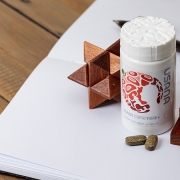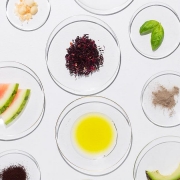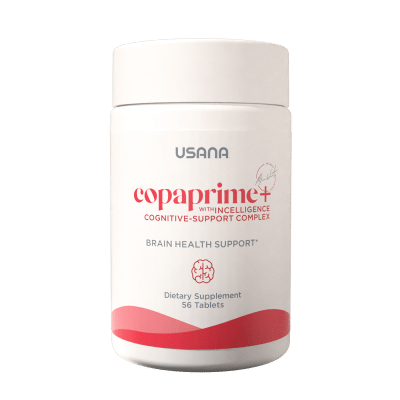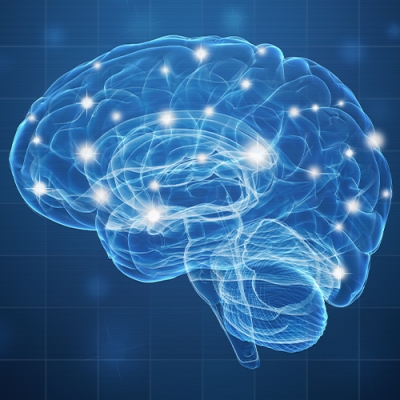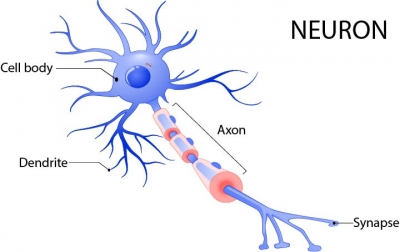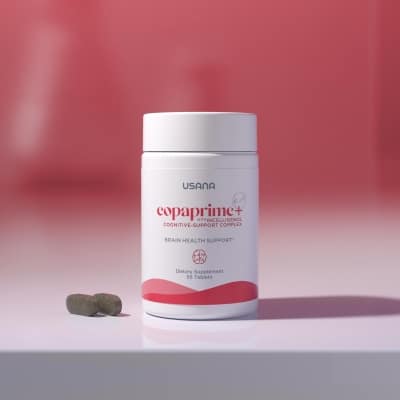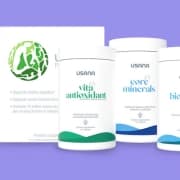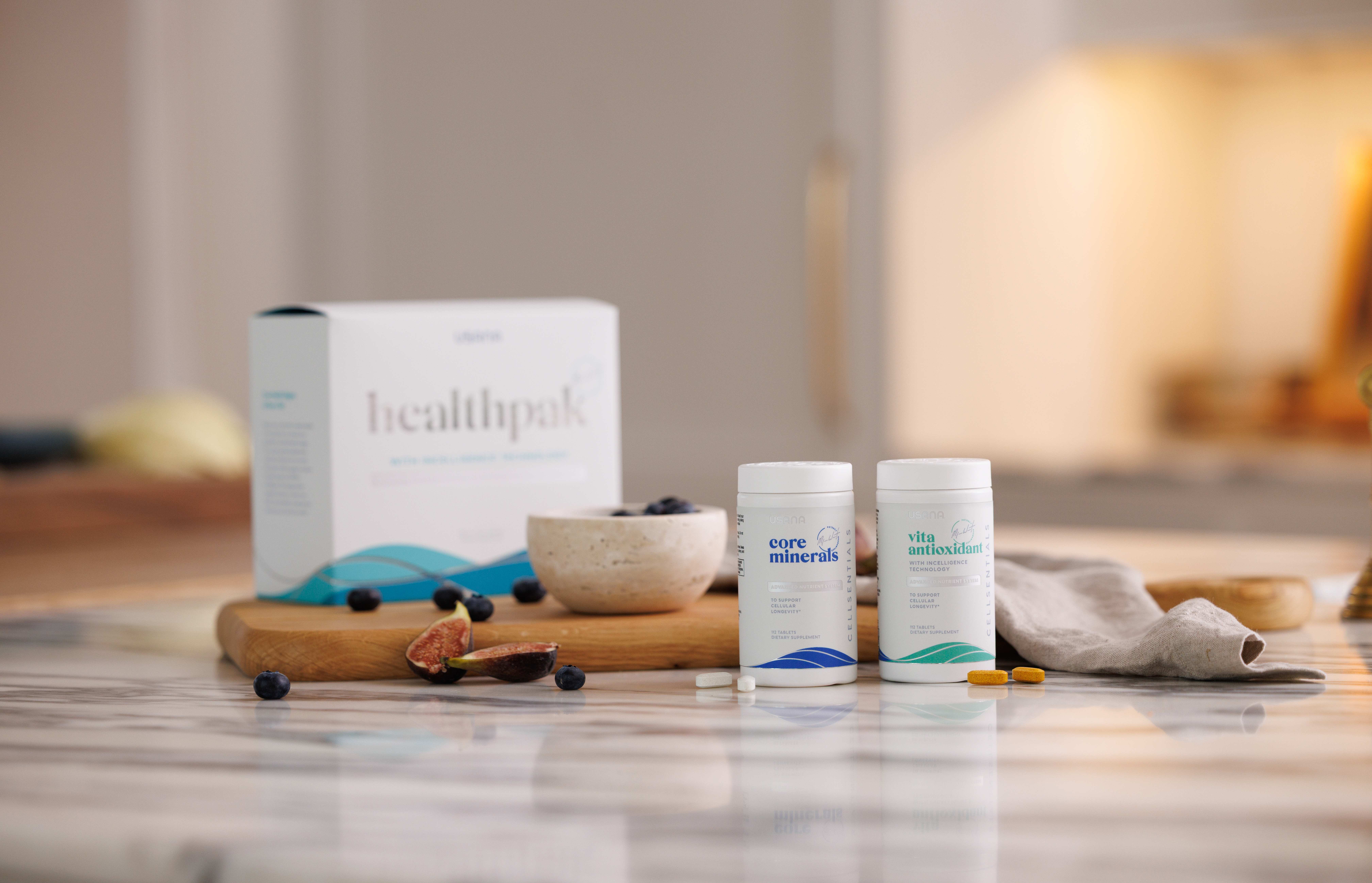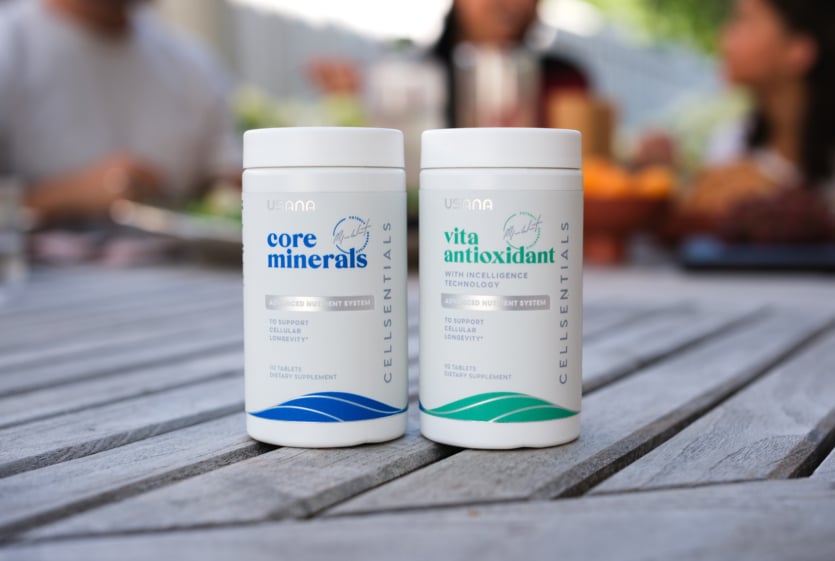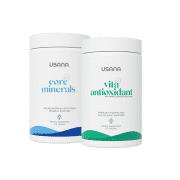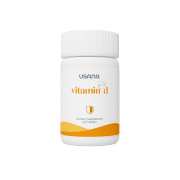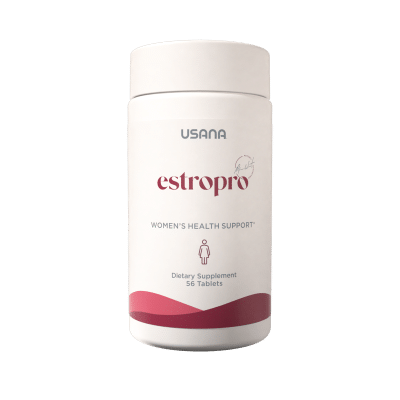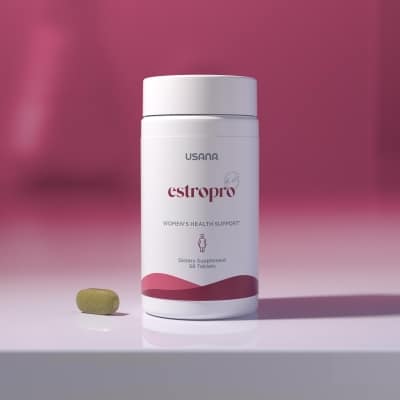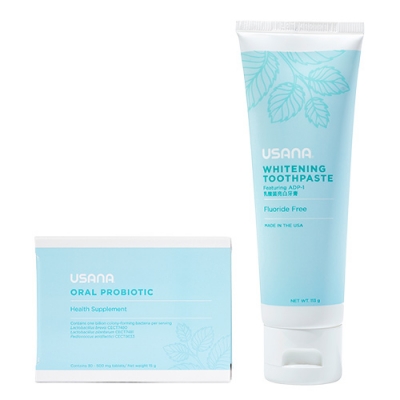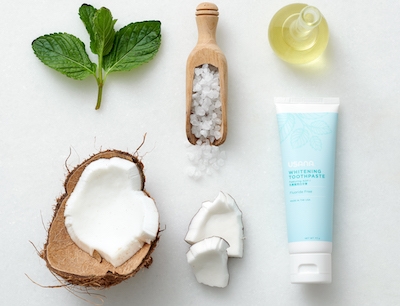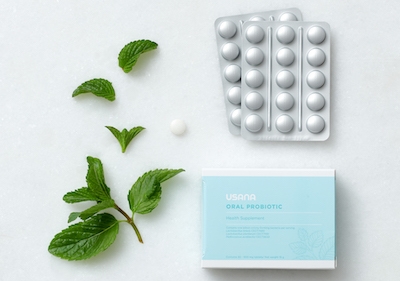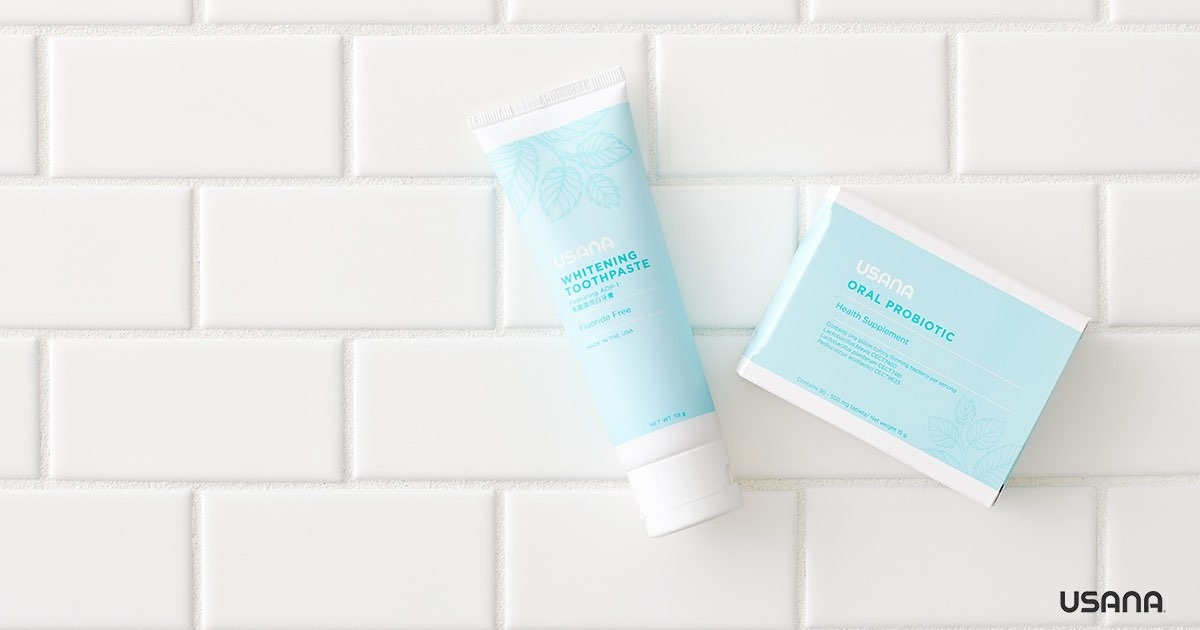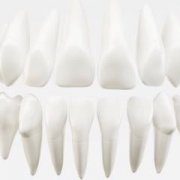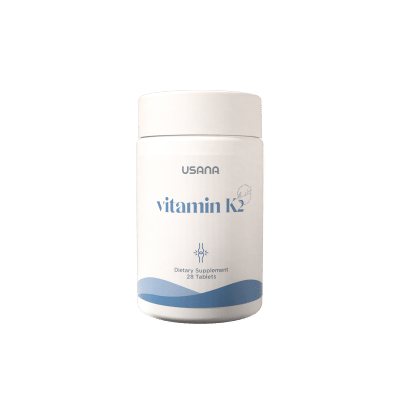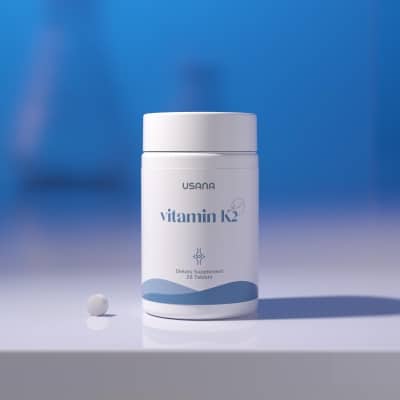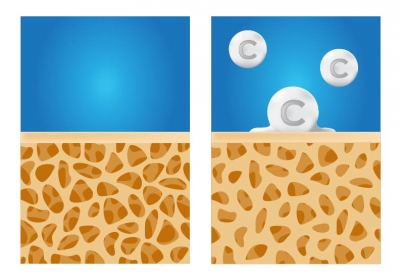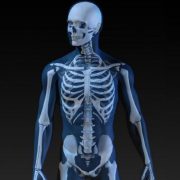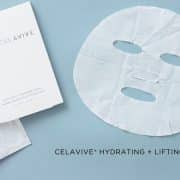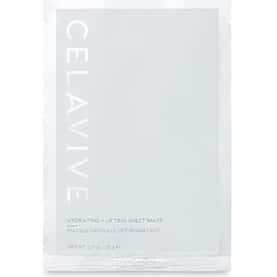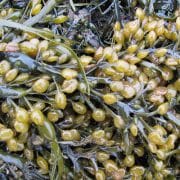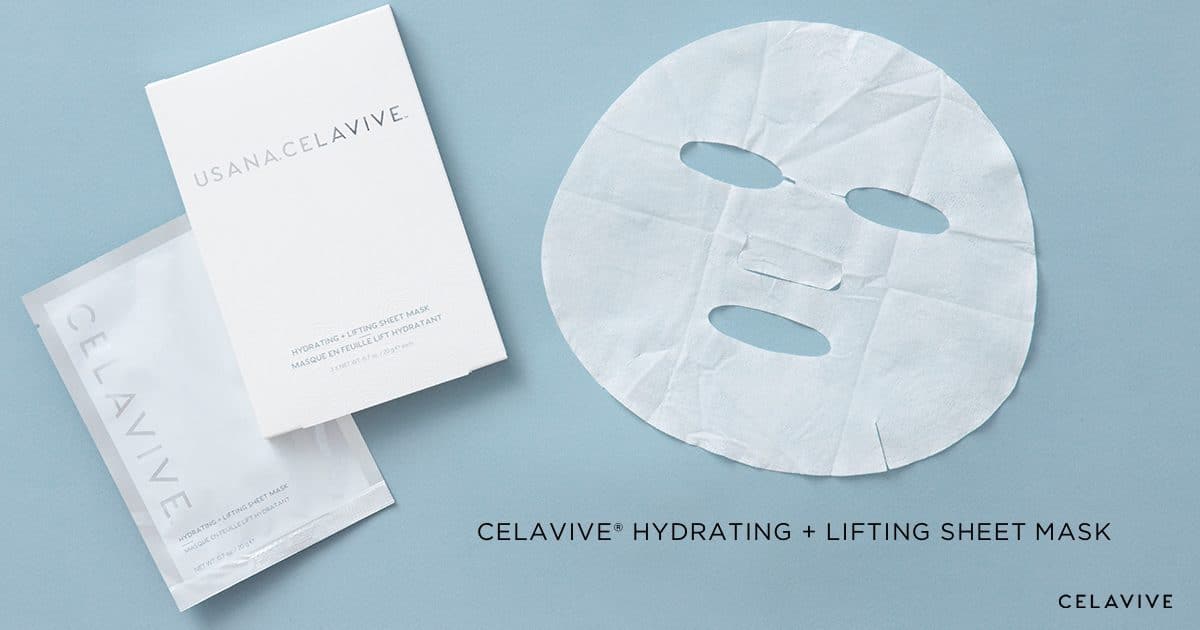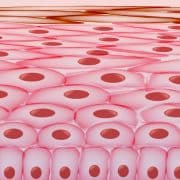A glossary with an alphabetical list of all the ingredients found in Celavive® Skincare products.
You can also read more in-depth information about each Celavive product, including more information about the ingredients. Links to each page are available here.
0–9 | A–B | C–D | E–F | G–H | I–J | K–L | M–N | O–P | Q–R | S–T | U–V | W–X | Y–Z
0–9
1,2-HEXANEDIOL: Paraben- and formaldehyde-free preservative. Also an effective humectant (substance that attracts water) for dry skin.
A–B
ACANTHOPANAX SENTICOSUS (ELEUTHRO) ROOT EXTRACT: Part of a complex of three types of ginseng that provides antioxidant action for a brighter, firmer look.
ACETYL GLUCOSAMINE: Amino acid sugar that helps reduce the appearance of dark spots and unwanted variations in skin tone.
ACETYL HYDROXYPROLINE: Amino acid that adds moisture and supports the natural ceramides (part of your skin’s natural lipids) in the skin’s barrier for a hydrated appearance.
ACRYLATES/C10-30 ALKYL ACRYLATE CROSSPOLYMER: Gentle emulsifier that thickens lotions or creams to helps them glide on smoothly.
ALBIZIA JULIBRISSIN BARK EXTRACT: Also known as silk tree. Helps reduce the appearance of fine lines and loss of firmness.
ALPHA GLUCAN (see also DEXTRIN): Sugar that helps bind water to help moisturize and soften skin.
ALPINIA SPECIOSA LEAF EXTRACT (see also BLEND OF SEVEN BOTANICAL EXTRACTS): Botanical source of antioxidants that also conditions the skin.
AMINOMETHYL PROPANEDIOL: Blended with active compounds in skincare products to ensure they dissolve and absorb into skin properly.
ARTEMISIA ABROTANUM EXTRACT: Commonly known as southernwood extract, this compound is rich in oligosaccharides (a type of sugar) that make the skin appear smoother.
ASCOPHYLLUM NODOSUM EXTRACT: Seaweed that contains minerals and antioxidants to help nourish and deep clean your pores for a healthy appearance.
ASCORBIC ACID: Vitamin C is an antioxidant and skin-soothing agent that can help preserve formulations while providing support against the visible signs of environmental damage.
AVOBENZONE (see also UV FILTER BLEND): Sunscreen that protects primarily against UVA rays, but offers some protection against UVB.
BIS-GLYCERYL ASCORBATE: Non-ionic vitamin C derivative that provides excellent skin-moisturizing effects.
BLEND OF SEVEN BOTANICAL EXTRACTS (Paeonia Albiflora Root Extract, Paeonia Suffruticosa Root Extract, Lilium Candidum Bulb Extract, Origanum Majorana Leaf Extract, Alpina Speciosa Leaf Extract, Oenothera Biennis Seed Extract, Geranium Robertianum Extract): Unique blend of botanical extracts rich in antioxidants that contain essential oils to help preserve skincare products without the use of harsh chemicals.
BUTYLENE GLYCOL: Commonly used ingredient in cosmetics that helps to enhance the texture and application of skincare formulations.
BUTYROSPERMUM PARKII (Shea Butter): Known as Africa’s ancient beauty secret for its intense moisturizing capabilities and pleasant fragrance.
C–D
CAPRYLYL GLYCOL: A gentle moisturizer that also acts as a preservative.
CAPRYLIC/CAPRIC TRIGLYCERIDE: Compound derived from coconut oil and glycerin that adds moisture to skin.
CARBOMER: Helps suspend an insoluble solid in a liquid. Used to maintain product consistency by keeping emulsions from separating into their oil and liquid components.
CARRAGEENAN: Sugar extracted from certain species of red seaweed (Rodophyceae) that helps thicken and stabilize skincare formulas.
CELAVIVE CELL SIGNALING COMPLEX (made with InCelligence Technology®): Active ingredients that allow for effective cell communication—palmitoyl tripeptide-38, hexapeptide-48 HCL, southernwood extract, and coffee-seed extract. Supports your skin’s barrier system and enhances your body’s natural youth-preserving functions. Helps reduce the appearance of wrinkles, uneven skin tone, and large pores, while also producing a healthy glow.
CELLULOSE GUM: Helps thicken and stabilize skincare formulas.
CERAMIDE NP: Mimics natural ceramides to help skin retain moisture for a hydrated appearance.
CETEARYL ALCOHOL: Skin softener with conditioning benefits; used to improve the application and texture of skincare formulations.
CETETH-10: Emulsifier with dirt-dissolving properties that also helps active ingredients blend into a formula.
CETYL ETHYLHEXANOATE: Oil-like skin softener that helps dissolve dirt while preserving skin’s moisture.
CITRIC ACID: Alpha hydroxy acid derived from citrus fruits that serves as a natural preservative and pH (acidity) adjuster.
CITRULLUS LANATUS (Watermelon) FRUIT EXTRACT (see also OLIVOL BOTANICAL BLEND): One of nature’s few materials to contain citrulline, which helps condition the skin and lock in natural moisture.
CITRUS PARADISI (Grapefruit) FRUIT EXTRACT: Contains vitamin C and other antioxidants to promote an even, bright appearance.
COFFEE (Arabica) SEED EXTRACT(see also CELAVIVE CELL SIGNALING COMPLEX): A key component of the InCelligence Technology in Celavive products. Plant-based ingredient that has advanced antioxidant properties and has been shown to contribute to smoother, healthy-looking skin.
CYCLODEXTRIN: Blends with pea protein to promote absorption into the skin.
CYCLOPENTASILOXANE: A skin-safe silicone fluid that enhances product texture and application.
DEXTRIN: Water-soluble carbohydrate used to improve formula texture. Helps lock in your skin’s natural moisture for a radiant look.
DICETYL PHOSPHATE: Enhances texture of skincare formulas while also conditioning skin.
DIETHYLAMINO HYDROXYBENZOYL HEXYL BENZOATE: Broad-spectrum UV filter that also helps stabilize other UV filters.
DIMETHICONE: Gentle, lightweight silicone that forms a protective hydrating layer on the skin to help retain natural moisture by preventing water loss.
DISODIUM EDTA: Preservative that protects integrity of active ingredients and maintains texture of formula.
DIPENTAERYTHRITYL TRI-POLYHYDROXYSTEARATE: Skin-conditioning liquid with excellent water-holding capability.
DIPHENYLSILOXY PHENYL TRIMETHICONE: Conditioning agent that enhances product texture and application on skin.
DIPROPYLENE GLYCOL: Stabilizes product texture.
DIISOPROPYL SEBACATE: Boosts efficacy and application of sunscreens by helping them spread evenly on the skin. Also leaves skin feeling hydrated and silky.
E–F
EPILOBIUM ANGUSTIFOLIUM FLOWER/LEAF/STEM EXTRACT: Brightens, balances, and provides antioxidant protection to the complexion.
ETHOXYDIGLYCOL: Supports effectiveness of UV absorbers.
ETHYLHEXYL PALMITATE: Gentle skin conditioner that enhances texture of skincare formulations without interfering with effectiveness of sunscreens.
FRAGRANCE: A combination of primarily botanical extracts that add a pleasant aroma to skincare products to enhance the overall experience.
G–H
GARDENIA FLORIDA EXTRACT: Flower extract with antioxidant properties that helps refresh and revive the look of dull, tired skin.
GERANIUM ROBERTIANUM EXTRACT (see also BLEND OF SEVEN BOTANICAL EXTRACTS): Soothing botanical extract that helps support skin cells for a bright, youthful appearance.
GINKGO BILOBA LEAF EXTRACT: Contains high levels of the antioxidant quercetin, which plays a role in fortifying skin against environmental stress and visible aging.
GLUCOSYL CERAMIDE: Rice-derived ceramide that supports natural lipid production and moisture retention in the outermost layers of the skin, providing a healthy glow.
GLUCOSYL HESPERIDIN: Powerful phytonutrient from citrus plants that can help revitalize the look of dull, dry skin caused by stress and climate changes.
GLYCERIN: Preserves and attracts water in the skin’s outer layer for moisturizing effects that help skin maintain a healthy look and feel.
GLYCERYL STEARATE: Emulsifier that helps remove dirt and makeup while maintaining skin’s natural moisture.
GLYCERYLAMIDOETHYL METHACRYLATE/STEARYL METHACRYLATE COPOLYMER: Reduces the appearance of wrinkles by mimicking naturally produced ceramides, which are critical to the appearance of smooth skin texture and even tone.
GLYCINE SOJA (Soybean) SEED EXTRACT: Plant-derived ingredient that adds moisturizing benefits.
GLYCOL DISTEARATE: Pearlescent emulsifier and foaming agent that also helps condition the skin.
GLYCOSAMINE: An amino acid sugar that can help replenish moisture and soothe the skin.
GLYCOSYL TREHALOSE: Sugar that helps support ideal levels of skin moisture.
HELIANTHUS ANNUUS (Sunflower) OIL (see also HORUS K COMPLEX): Hydrating plant oil to give skin a youthful appearance.
HEXAPEPTIDES 9 AND 33: Hexapeptides 9 and 33 reduce the visual intensity of facial wrinkles.
HEXAPEPTIDE-48 HCL (see also CELAVIVE CELL SIGNALING COMPLEX): A key component of the InCelligence Technology in Celavive products. Hexapeptide-48 HCL counteracts the visible effects of chronological and lifestyle-stress aging by targeting a new category of skin receptors.
HIPPOPHAE RHAMNOIDES OIL: Also known as sea buckthorn oil. Rich in vitamin C, fatty acids, and powerful carotenoids to replenish skin’s hydration and defend against environmental elements.
HOMOSALATE (see also UV FILTER BLEND): Sunscreen that absorbs UVB rays.
HORUS K COMPLEX (Rosa Canina Fruit Oil, Avocado Oil, Apricot Oil, Sunflower Seed Oil): A blend of naturally derived plant and vegetable oils that are rich in vitamin K, which helps diminish the appearance of dark circles.
HYALURONIC ACID: Valuable skin-replenishing agent that has restorative abilities and can help enhance your skin’s natural moisture content for a noticeably plump appearance.
HYDROGENATED STARCH HYDROLYSATE: A hydrating sugar.
HYDROLYZED COLLAGEN: Consists of water-soluble peptides of various molecular weights that are rich in amino acids, which help support the natural production of a healthy skin matrix for a more youthful look.
HYDROLYZED CORN STARCH: Supports delivery of Olivol® Botanical Blend to skin and helps absorb oil.
HYDROLYZED HIBISCUS ESCULENTUS EXTRACT: Okra extract can help reduce the appearance of fine lines and wrinkles caused by repeated mechanical motions, like smiling.
HYDROXYETHYL ACRYLATE/SODIUM ACRYLOYLDIMETHYL TAURATE COPOLYMER: Thickener that enhances consistency and stability of skincare formulations. Also gives product a silky feel on the skin.
HYDROXYPROPYL CYCLODEXTRIN: Helps provide stability to palmitoyl tripeptide-38.
I–J
ILLICIUM VERUM (Anise) FRUIT EXTRACT: Part of a botanical preservative system that also offers skin-conditioning benefits.
ISODECYL NEOPENTANOATE: Part of a blend of ingredients that boosts efficacy and application of sunscreens by helping them spread evenly on the skin. Also leaves skin feeling silky and supple.
ISOPENTYLDIOL: Helps attract and retain moisture for a hydrated appearance.
ISOPROPYL LAUROYL SARCOSINATE: Amino-acid from coconut fatty acids that offers non-greasy moisturizing for a hydrated look and smooth feel.
JOJOBA ESTERS: Oil-free skin softener derived from the desert plant jojoba that’s similar to sebum naturally found on skin. Promotes healthy appearance and even skin tone by increasing moisture; supporting skin barrier function; and reducing dryness and roughness.
K–L
LACTOBACILLUS/GRAPE JUICE FERMENT FILTRATE: Moisturizer with natural skin-conditioning properties.
LACTOBACILLUS/SOYBEAN EXTRACT FERMENT FILTRATE: Gentle skin-conditioning agent that contributes to a balanced, healthy-looking complexion.
LAURIC ACID: Moisturizing fatty acid found in coconut oil that offers gentle cleansing properties.
LAURYL LACTATE: Part of a blend of ingredients that boosts efficacy and application of sunscreens by helping them spread evenly on the skin. Also leaves skin feeling silky and hydrated.
LAURYL PCA: Moisturizer that helps condition the skin.
LECITHIN: Combines with sea buckthorn oil to enhance penetration and promote a healthy appearance.
LENS ESCULENTA (Lentil) FRUIT EXTRACT (see also OLIVOL BOTANICAL BLEND): Plant-based ingredient that helps enhance moisture content in the skin for a long-lasting, hydrated look and feel.
LILIUM CANDIDUM BULB EXTRACT (see also BLEND OF SEVEN BOTANICAL EXTRACTS): Extract from the bulb of the white Madonna lily that helps brighten and hydrate complexion.
LINALOOL: Natural fragrance.
LONICERA JAPONICA (Honeysuckle) FLOWER EXTRACT: Part of a botanical preservative system that also helps condition the skin.
M–N
MACADAMIA TERNIFOLIA SEED OIL: Contains high concentrations of palmitoleic acid, which helps increase hydration and plump the appearance of the skin.
MALIC ACID: Alpha hydroxy acid used in skincare formulations to promote healthy skin renewal for smoother-looking texture. Also helps balance the formula’s pH levels.
MALLOW FLOWER EXTRACT: Enhances texture and helps add moisture to soothe dry skin.
MANNITOL: Naturally derived sugar alcohol that serves as an effective skin conditioner by helping to reduce the loss of moisture.
MALPIGHIA PUNICIFOLIA (Acerola) FRUIT EXTRACT: Powerful antioxidant and added source of vitamin C.
MELISSA OFFICINALIS LEAF EXTRACT: Lemon balm extract that helps gently cleanse the skin. Also has antioxidant properties.
MENTHYL PCA: Skin conditioner with a cooling sensation to soothe the skin.
METHYL METHACRYLATE CROSSPOLYMER: Texture enhancer that also absorbs oil.
METHYLPROPANEDIOL: Helps enhance absorption of active ingredients and leaves a smooth, dewy finish on the skin.
MICA: Boosts effectiveness of sunscreens by helping them spread evenly for consistent coverage.
MYRISTIC ACID: Saturated fatty acid that creates lather or foaming effects for gentle cleansing.
NATTO GUM: Added to HORUS K COMPLEX. A fermentation product of soy that is a hydrating source of vitamin K.
O–P
OCIMUM BASILICUM HAIRY ROOT CULTURE EXTRACT: Antioxidant that supports your skin’s natural defense against the visible signs of aging caused by overexposure to the sun.
OCTINOXATE (see also UV FILTER BLEND): Sunscreen that absorbs UVB rays.
OCTOCRYLENE (see also UV FILTER BLEND): Moisturizing sunscreen that absorbs UVB light and also helps stabilize Avobenzone, which can degrade in light, over time.
OENOTHERA BIENNIS SEED EXTRACT (see also BLEND OF SEVEN BOTANICAL EXTRACTS): Evening primrose seed extract that has brightening properties.
OLEA EUROPAEA (Olive) FRUIT EXTRACT (see also OLIVOL BOTANICAL BLEND): Antioxidant that helps protect skin from environmental elements to maintain healthy appearance.
OLIGOPEPTIDE-6: Powerful peptide that helps to reduce the appearance of deep wrinkles and minimize the look of dark spots for a visible improvement in the appearance of aging.
OLIVOL™ BOTANICAL BLEND: Combines Olivol® olive-fruit extract with watermelon, apple, and lentil-fruit extracts to provide intense moisturizing effects that have been shown to increase the moisture level of the skin for up to 24 hours after just one application.
ORIGANUM MAJORANA LEAF EXTRACT (see also BLEND OF SEVEN BOTANICAL EXTRACTS): Natural fragrance with preservative action.
PAEONIA ALBIFLORA & SUFFRUTICOSA ROOT EXTRACTS (see also BLEND OF SEVEN BOTANICAL EXTRACTS): Help protect and brighten the skin’s appearance.
PALMITIC ACID: Fatty acid found naturally in the skin that is often used in skincare products as a cleansing agent and moisturizer.
PALMITOYL TRIPEPTIDE-5: Delivers moisture and nutrients that absorb deeply into skin. Enhances the natural production of collagen and elastin, which helps firm the appearance of sagging skin and diminish the visibility of wrinkles.
PALMITOYL TRIPEPTIDE-38 (see also CELAVIVE CELL SIGNALING COMPLEX): A key component of the InCelligence Technology in Celavive products. It works to support the natural production of key healthy skin elements, like collagen and elastin, to promote younger-looking skin.
PANAX GINSENG ROOT EXTRACT: Part of a complex of three types of ginseng that helps improve the appearance of aging by energizing and protecting skin from the signs of visible photo-damage.
PANAX QUINQUEFOLIUS ROOT EXTRACT: Part of a complex of three types of ginseng that provide antioxidant, brightening, and firming action.
PANTHENOL: Form of vitamin B5 that softens skin.
PEARL POWDER: Rich in amino acids and minerals that help support skin hydration and protect against visible signs of environmental stress.
PEG-7 GLYCERYL COCOATE: Coconut-based ingredient used in foaming cleansers to enhance texture and protect skin from drying out.
PEG-15 GLYCERYL ISOSTEARATE: Cleansing agent that provides good spreading properties and stability to creams and lotions.
PEG-20 SORBITAN COCOATE: Coconut-based cleanser.
PEG-25 GLYCERYL ISOSTEARATE: Stabilizes cleanser formulations.
PEG-40 HYDROGENATED CASTOR OIL: Enhances texture by helping to combine oil-based ingredients in water-based skincare formulations.
PENTYLENE GLYCOL: Anti-microbial agent that helps preserve skincare formulations and has moisture-binding properties.
PERSEA GRATISSIMA (Avocado) OIL (see also HORUS K COMPLEX): Antioxidant with high concentrations of phytosterols (a type of plant-based nutrient) and fatty acids that replenish skin and defend against the look of environmental damage.
PISUM SATIVUM (Pea) SEED EXTRACT: Helps protect dermal proteins and fortify your skin against the look of visible aging.
POLYSORBATE 60 & 80 (the numbers describe the physical state of polysorbate—ranges from semi-solid to liquid.): Texture enhancers that help combine oil-based ingredients in water-based skincare formulas. Help dissolve dirt.
POLYGLYCERYL-10 STEARATE: Stabilizes and enhances texture of foaming cleanser formula.
POLYMETHYL METHACRYLATE: Gives a soft feel to the product.
PORTULACA OLERACEA EXTRACT: Delivers antioxidants and fatty acids to the skin to help promote a youthful appearance.
POTASSIUM HYDROXIDE: Keeps skincare formulas balanced by attracting water to adjust pH.
PPG-6-DECYLTETRADECETH-30: Enhances texture of formula by allowing delivery of oil- and water-based ingredients together.
PROPANEDIOL: Gentle, non-greasy moisturizer that gives skin a soft feel while helping to preserve and enhance the texture of skincare formulas.
PRUNUS ARMENIACA (Apricot) KERNEL OIL (see also HORUS K COMPLEX): Non-greasy, smoothing moisturizer derived from apricot seeds.
PRUNUS LANNESIANA FLOWER EXTRACT: Extract from sakura cherry blossom that soothes and brightens skin.
PULLULAN: Natural sugar that forms a light film on the skin, which provides an immediate skin-tightening effect for a smooth appearance.
PYRUS MALUS (Apple) FRUIT EXTRACT (see also OLIVOL BOTANICAL BLEND): Skin moisturizer and a key component of the Olivol Botanical Blend.
Q–R
ROSA CANINA FRUIT OIL (see also HORUS K COMPLEX): Oil from rosehip that hydrates as it delivers antioxidants and fatty acids to the skin for a healthy look.
ROSA MULTIFLORA FRUIT EXTRACT: Antioxidant extract from Eijitsu rose that balances and brightens the complexion. Tightens the appearance of pores.
ROYAL JELLY EXTRACT: Rich in nutrients and amino acids that minimize the look of wrinkles and promote a rejuvenated appearance.
S–T
SAPINDUS TRIFOLIATUS (Soapberry) FRUIT EXTRACT: Helps create a thick, soap-like foam in gentle cleansing formulations.
SCUTELLARIA BAICALENSIS ROOT EXTRACT: Herb with antioxidant and brightening properties. Also acts as botanical preservative.
SILICA: Texture enhancer that also absorbs oil.
SODIUM CITRATE: Used to control the pH level of skincare formulations.
SODIUM HYALURONATE: A salt naturally found in skin’s hyaluronic acid that holds water to promote a hydrated appearance.
SODIUM HYDROXIDE: Used to help balance the pH of skincare formulas.
SODIUM LACTATE: Salt from lactic acid that acts as a natural preservative and exfoliant.
SODIUM PCA: Water-attracting agent that helps bind moisture in the outer layers of the skin.
SOUTHERNWOOD EXTRACT (see also CELAVIVE CELL SIGNALING COMPLEX): A key component of the InCelligence Technology in Celavive products. Southernwood extract is rich in natural sugars that help stimulate lipid synthesis and storage, increasing density to promote an appearance of “lipofilling” or plumping of the skin.
SQUALANE: This plant-based sugar effectively moisturizes the skin, giving it a visibly soft, supple look.
STEARIC ACID: Saturated fatty acids that are used as a moisturizing and cleansing agent.
TETRASODIUM EDTA: Stabilizes and helps preserve skincare formulas.
TOCOPHEROL: Naturally occurring compound related to vitamin E. Provides antioxidant activity and conditions the skin.
TOCOPHERYL ACETATE: A type of organic compound (ester) from tocopherol (combined with acetic acid). Provides antioxidant activity and conditions the skin, without leaving an oily feeling.
TRIBEHENIN PEG-20 ESTERS: Softens the skin and keeps ingredients in formula from separating.
TRIETHYLHEXANOIN: Provides non-greasy hydration for the skin.
THYMUS (Thyme) FLOWER/LEAF EXTRACT: Contains powerful antioxidant properties.
U–V
UBIQUINONE: Fat-soluble substance naturally found in the body known for antioxidant benefits. Energizes the skin for a noticeably younger-looking complexion.
UV FILTER BLEND: Comprised of four UV filters that offer broad-spectrum protection against the sun’s damaging ultraviolet (UVA and UVB) rays.
- Avobenzone—protects primarily against UVA rays but offers some protection against UVB, as well
- Octocrylene—a moisturizing sunscreen that absorbs UVB light and also helps stabilize Avobenzone, which can degrade in light over time
- Homosalate—absorbs UVB rays
- Octinoxate—an effective UVB absorber
Celavive Protective Day Lotion and Day Cream both offer SPF 30. Sun protection factor (SPF) is based on how long it takes to sunburn skin that’s been treated with sunscreen compared to no sunscreen.
VITIS VINIFERA (Grape) LEAF EXTRACT: Potent antioxidant that helps diminish visible signs of environmental damage to your skin.
VITIS VINIFERA (Grape) VINE EXTRACT: Liquid from grape and bud vines that contains resveratrol and other antioxidants. Helps smooth the appearance of wrinkles.
W–X
XANTHAN GUM: Natural thickening ingredient.
XYLITOL: Sugar alcohol used as a skin conditioner to promote balanced moisture levels and improve barrier function for healthy-looking skin.
Y–Z
ZANTHOXYLUM PIPERITUM FRUIT EXTRACT: Energizing antioxidant from Japanese pepper that also acts as a botanical preservative.


